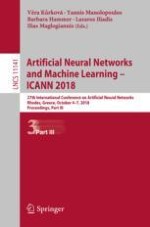2018 | OriginalPaper | Buchkapitel
A Deep Predictive Coding Network for Inferring Hierarchical Causes Underlying Sensory Inputs
verfasst von : Shirin Dora, Cyriel Pennartz, Sander Bohte
Erschienen in: Artificial Neural Networks and Machine Learning – ICANN 2018
Aktivieren Sie unsere intelligente Suche, um passende Fachinhalte oder Patente zu finden.
Wählen Sie Textabschnitte aus um mit Künstlicher Intelligenz passenden Patente zu finden. powered by
Markieren Sie Textabschnitte, um KI-gestützt weitere passende Inhalte zu finden. powered by
